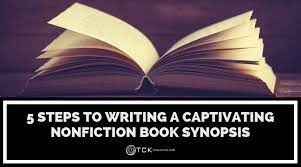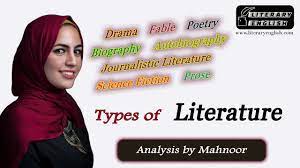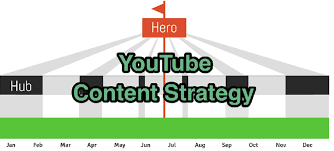How to Write a Good Literary Nonfiction in 6 Short Steps
If you love literature and coffee, then you’re in luck! In this article, we’ll outline six easy steps to writing great literary nonfiction. Whether you’re a budding writer looking to hone your craft or an enthusiastic reader who wants to learn more about the writing process, these tips will help you produce compelling and well-crafted pieces.
1. Start with a strong topic. If your goal is to write about something interesting or unique, make sure to select a topic that’s worthy of exploration. Don’t choose something trivial or derivative – if your aim is to immerse readers in your narrative, it’s important to find relevant content.
2. Be conversational. When you write, it’s important to sound like a friend sharing an interesting story. To achieve this tone of voice, use informal language and avoid long paragraphs full of academic jargon. Keep things simple and accessible – readers should be able to understand what you’re saying without having to struggle through dense prose.
3. Use active verbs and memorable phrases. When describing action or dialogue, be sure to use words that evoke images in readers’ minds: “He strode purposefully across the room,” “She grumbled under her breath,” etc. Likewise, try to use phrases that will stick in their memories: “The sun shone brightly through the window,” “A cool breeze stirred the leaves gently.”
4. Write for entertainment rather than instruction (unless explicitly stated otherwise). Readers are primarily
literature channels on youtube
There are many different literature channels on YouTube, and each one offers a unique way to explore the world of literature. Here are six channels that will help you write good literary nonfiction:
1. Literature Network: This channel offers short documentaries about famous authors, their works, and the history of literature. You can also find essays and interviews with literary experts.
2. Literature TV: This channel features videos about classic books, plays, and poems. You can also find video reviews of new releases and book recommendations.
3. Literary Hub: This channel offers multimedia content about books, including book trailers, author interviews, and book comparisons. You can also find articles about writing and publishing, as well as booklists for readers of all ages.
4. Book Riot: This channel is devoted to book reviews, news, and interviews with authors. You can find essays about reading habits, book lists for every occasion, and more.
5. LitHub: This channel is home to long-form literary pieces – from feature stories to in-depth interviews – as well as book recommendations for readers of all levels of experience.
6. The Penmanship Project: This channel teaches how to write well by focusing on the basics of good penmanship. You can find instructional videos about how to use proper grammar and punctuation, as well as tips for improving your writing style overall.
literature George Orwell youtube
Writing good literary nonfiction can be an intimidating task, but with a little effort, it can be done in no time. In this article, we will provide you with six steps that will help you write a good nonfiction piece.
1. Define your topic.
2. Gather information.
3. Organize your information.
4. Write your introduction and first paragraph.
5. Write your body paragraphs.
6. Finish up your essay by addressing any concerns or suggestions you have raised.
Writing literary nonfiction is a skill that can be improved with practice.
There are a few things to keep in mind when writing this type of text. First, it is important to remember that literary nonfiction is not the same as academic writing. This type of writing should be more personal and expressive, while still staying true to the facts.
It can be helpful to think about your audience when you write literary nonfiction. Who are you writing for? What kind of tone do you want to set? Keeping your reader in mind will help you make choices about what details to include and how to word things.
Another important thing to keep in mind is that literary nonfiction often relies heavily on quotes and other people’s stories. When you use someone else’s words, it is important to give them credit. This means including their name and where they said or wrote the words you are quoting. Failure to do this can result in plagiarism, which is a serious offense.
If you take the time to learn the basics of writing literary nonfiction, you will be well on your way to creating interesting and engaging pieces of writing.
There are Six Steps to Writing Literary Nonfiction.
1. Know your purpose. What are you trying to say?
2. Do your research. This is critical to getting your facts straight and ensuring that your writing is accurate.
3. Write a draft. Get your thoughts down on paper (or screen) and worry about editing later.
4. Edit, edit, edit. Once you have a complete draft, it’s time to start cutting unnecessary words and refining your prose.
5. Show, don’t tell. Use concrete details and vivid language to bring your story to life for readers.
6
Step One: Research your topic.
Before you can write a good paragraph, you need to know what you’re writing about. That means doing some research on your topic. Try to find reliable sources of information that can help you learn more about your topic. Once you have a good understanding of your subject matter, you can start planning your paragraph.
Step Two: Write a topic sentence.

Every paragraph should have a main idea or point that is expressed in the “topic sentence.” This first sentence will introduce the reader to the rest of the paragraph and should be broadly related to the overall theme of the essay or paper.
Step Three: Develop your ideas with supporting sentences.
The following sentences in the paragraph should support, explain, or expand on the main idea expressed in the topic sentence. These sentences should provide specific information that helps develop the main idea of the paragraph. Make sure each sentence flows smoothly and logically from the one before it.
Step Four: Conclude your paragraph with a closing sentence.
The last sentence in a paragraph is typically a “closing” sentence that sums up or concludes the main points made in the paragraph. Sometimes this sentence will simply restate the main idea of the
Step Two: Write a thesis statement.
Thesis statements are tricky. In short, a thesis statement is the main idea of your paper—the point you are trying to make. A good thesis statement makes a debatable claim that can be defended with evidence. It should be specific enough that you can explore it in depth in your paper, but not so specific that there is no room for discussion. A good thesis statement will usually include the following four attributes:
1) Take on a subject upon which reasonable people could disagree;
2) Make a claim about which reasonable people could disagree;
3) Support your claim with evidence; and,
4) Explain why your evidence supports your claim.
Step Three: Develop your idea into a strong, compelling narrative.
Now that you have a clearer idea of what your story is about, it’s time to start fleshing it out into a strong, compelling narrative. To do this, you’ll need to focus on developing three key elements: plot, character, and setting.
The plot is the sequence of events that make up your story. A well-developed plot will keep readers engaged by providing them with a clear sense of conflict and resolution.
Character development is essential to creating a believable and relatable story. Your characters should feel like real people with their own motivations, desires, and backstories.
Finally, the setting helps bring your story to life by providing a specific time and place for it to take place in. A well-chosen setting can help create an atmosphere that enhances your plot and characters.
Step Four: Edit and polish your work until it shines.
No matter how good your initial draft is, it will almost certainly benefit from some editing and polishing. Be prepared to do some work on this step – it’s worth it!
First, read your piece aloud (or have someone else read it to you). This will help you catch errors that you may have missed when reading silently. Pay attention to awkward phrasing and choppy sentences. Make note of anything that sounds “off” or unclear.
Next, go through your piece line by line, looking for places where you can improve the flow or add more clarity. Use strong verbs and active language whenever possible. Avoid using filler words like “very” or “really” – they add nothing of value to your writing.
Finally, take a step back and look at the big picture. Is your argument clear and well-supported? Do the transitions between sections make sense? Is there anything else you could include to make your point even stronger?
Don’t be afraid to ask for feedback from a trusted friend or family member during this process – they may spot something that you missed. And once you’re happy with your revised draft, it’



